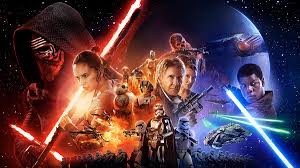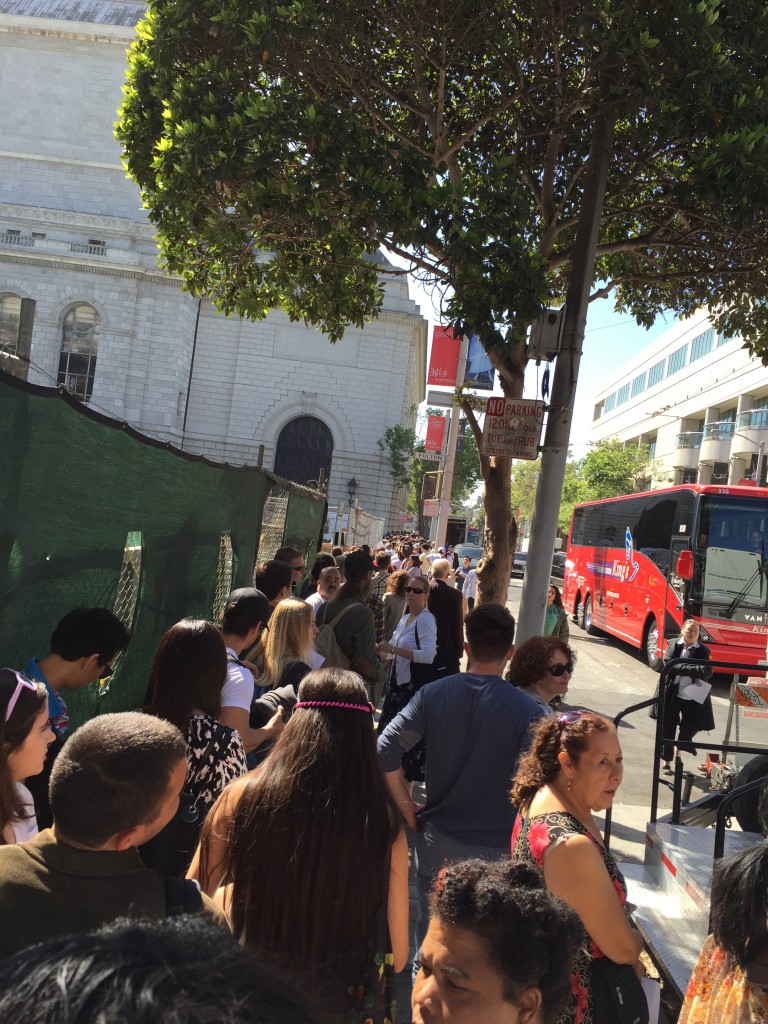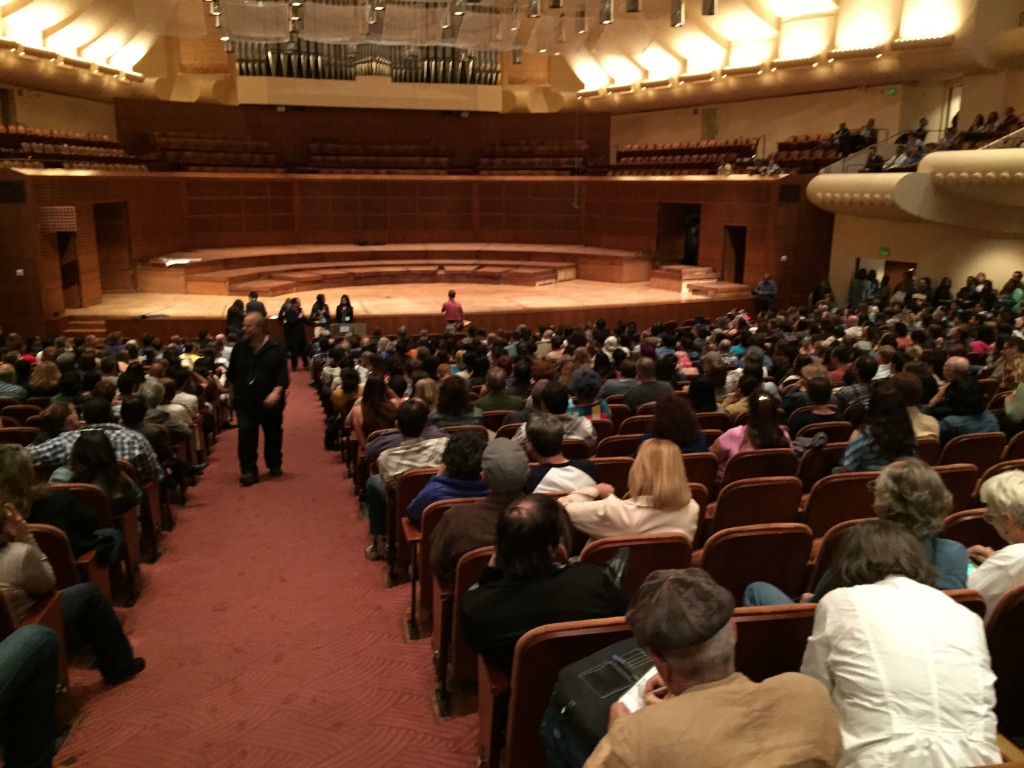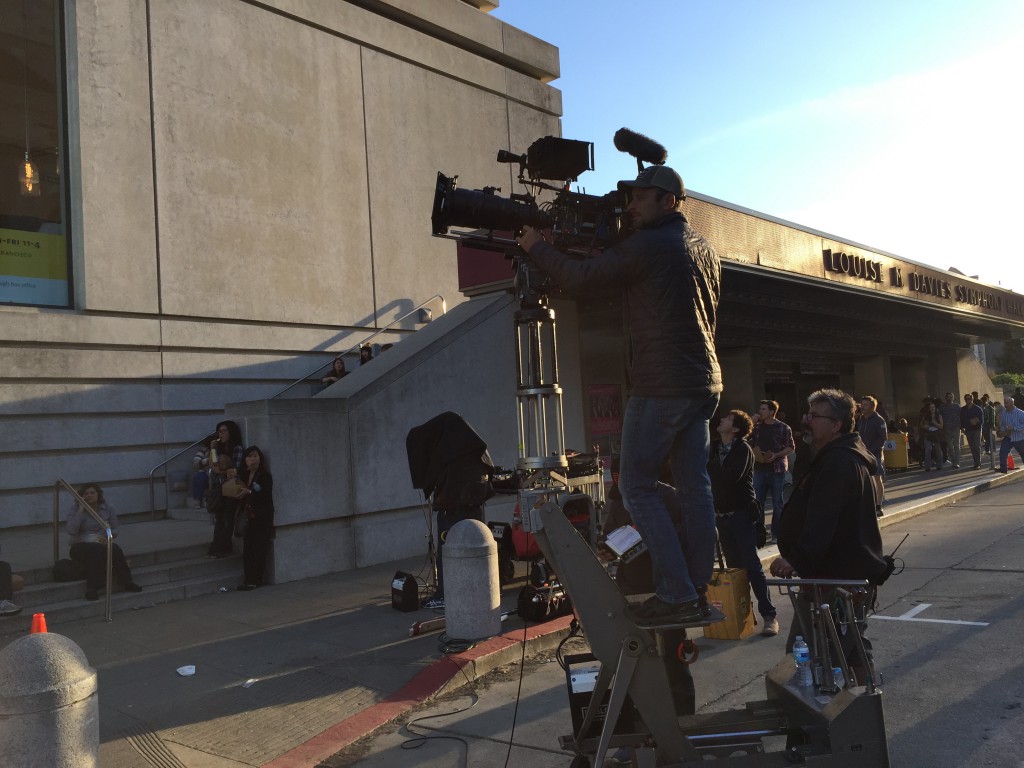Category Archives: Movies
After the Oscar boycott, then what?
Something’s rotten in Hollywood.
For the past two years, not one person of color has received an Academy Award nomination for acting. In protest, several prominent members of the film industry (including Spike Lee and Jada Pinkett Smith) have called for a boycott of the Awards ceremony.
One could make an argument that the recent nominations don’t represent a consistent bias. You could for example point out that, in the years from 2001-2006, the Best Actor award went to a person of color three times (Jamie Foxx, Denzel Washington and Forest Whitaker). During that same stretch, Will Smith, Terrence Howard, Don Cheadle and Ben Kingsley were all nominated.
But that was more the exception than the rule. There hasn’t been anything close to that ever since. While the situation may not be as dire as some suggest, I believe a problem does exist.
Even if we agree with the motivation behind the boycott, some thorny questions remain: What are people hoping to achieve by the boycott? What specific changes would be required to call off the boycott or at least not boycott again next year?
The most obvious answer seems simple enough: Have people of color get the nominations they deserve.
But it’s not quite that simple.
It’s too late to change this year’s nominations. So there’s no chance that this will end the boycott. It’s also just about impossible to imagine the Academy saying or doing anything in the next few weeks that would be radical enough to get the boycott cancelled.
So…a boycott is almost certain to happen this year. Some people will be skipping this year’s ceremony in protest.
Okay. But then what? What can be done to prevent a recurrence of the boycott next year?
Perhaps a few people of color will get nominated next year. Will that be the end of it? Maybe. But, as I’ve already pointed out, there have been years previous where people of color were nominated. That didn’t prevent what happened these past two years. So, no matter who gets nominated next year, there is no guarantee that it signals a long term shift. So what else should be done?
I doubt that anyone wants an “affirmative action” solution — one that would require a certain minimum number of people of color be nominated each year — regardless of the relative quality of their work. That would be at least as unfair as what now exists.
There is also the danger of a slippery slope here. Once you start imposing such rules, where does it stop? Many people complained that Carol did not get a Best Picture nomination this year. Speculation was that this was due to sexism — because women were in all Carol’s major roles. Is this answer here that the Academy be required to nominate at least one film that features women in the lead roles? I think not.
More generally, with Academy members voting via secret ballots, there seems no way to guarantee a desired outcome — any more than you could in a government election. The longer term solution, it seems to me, is to alter the composition of the Academy voters…which (as has been frequently pointed out) is currently made up predominantly of older white males. But this takes time, perhaps years.
Even here, a knotty problem remains. Since the Academy members are drawn from the people who do the work of making films, getting an increase in minority, female and younger members would likely require an increase in the number of those people working in films (and I don’t mean just actors here). Adding more knots, membership requires a recognition of one’s status by the very (potentially biased) people who are already in the Academy. As stated in the rules for actors as potential members:
“Membership shall be by invitation of the Board of Governors. Invitations to active membership shall be limited to those persons active in the motion picture arts and sciences, or credited with screen achievements, or who have otherwise achieved distinction in the motion picture arts and sciences and who, in the opinion of the Board, are qualified for membership.”
If the Board is biased, due in part to the current composition of its members, it will be hard for the Academy membership to change under the current rules. Perhaps there should be more objective criteria for membership, not so dependent on the “opinion of the Board.”
Still, the ultimate cause is higher up the chain. If the power structure in Hollywood is predominately white male, it likely makes it harder for people of color (and, to a similar extent, women) to achieve positions of power. This, in turn, likely makes it harder for people of color to get hired for the best acting roles. This is similar to the point that Spike Lee has made: you can’t give an award to a black person who never is given a chance to be cast in a role for which they might have won. You can’t give a Best Picture award to a movie that features black actors if that movie never gets made.
Even if you believe that the best actors this year were the ones that got nominated and there was no bias in the award selection process, the probability remains that a bias exists due to hiring decisions that trickle down from the very top.
Until the power structure in Hollywood changes, it’s difficult to see a happy ending here. Unfortunately, this is another thing that isn’t likely to happen with great haste. Many other industries, such as the tech industry (with which I am more familiar) are still struggling to resolve similar issues — such as how to get more women in positions of executive power or get jobs as entry level engineers. It hasn’t been easy.
So…by all means boycott the Academy Awards this year. But while you’re doing that, give some thought to what might realistically be done to make the situation better…so that there isn’t a reason to have another boycott next year. If you have a good idea, now’s the time to speak up.
Star Wars Recycled
Warning: plot spoilers ahead…
No doubt about it. Star Wars Episode VII: The Force Awakens is a worthy successor to the Star Wars legacy. It’s action-packed, including a spectacular pair of light saber duels at the end. It’s also populated with a pleasing combination of intriguing new characters and welcome old friends.
If only the story wasn’t so weak (and we can’t blame Lucas this time). Actually, in isolation from the other Star Wars movies, the story is often compelling. Even with the other films as context, it managed to sustain my interest throughout. Things could be worse.
The problem is that I kept getting irritated with how much of the plot was a copycat retread of the prior films, especially Episode IV. While I understand fans’ desire to maintain the “look and feel” of the original movies (and you can count me in this group), there’s a difference between inspiration and imitation. Star Wars Episode VII crossed that line.
Consider the following:
• Episode VII concerns a small band of good guys (the Rebellion) battling an evil force (the First Order). As the film opens, the First Order appears to be in control of the galaxy.
Episode IV opened almost the same way, except it was the Empire instead of the First Order. The poor Rebellion seems clueless about how to take over and run a galaxy. It’s only 30 years after they destroyed the Empire, and they are already back on the defensive.
• Episode VII opens with a cute droid (BB-8) being given a secret document to be delivered to allies elsewhere.
Episode IV opens the same way —with R2D2 the recipient.
• Episode VII opens with a young adult (Rey), who lives on a desert planet, acquiring the droid and committing to help the droid complete its mission.
Episode IV opens the same way — except Luke is the youngster on the desert planet.
• Episode VII features a major villain (Kylo Ren) who dresses in an all black outfit and wears a hard-shell hooded mask.
I needn’t remind you that, in Episode IV, this precisely describes Darth Vader. I suppose the filmmakers would argue that this is deliberate, that Ren is attempting to emulate Vader (Ren does not actually require the mask to survive). But it’s still another copycat plot point.
• In Episode VII, Ren has a master who is even more powerful and evil (Supreme Leader Snoke).
In Episodes V and VI, the same relationship exists between Vader and the Emperor.
• Episode VII’s “bar” scene imitates Episode IV’s cantina scene, right down to similar looking aliens in the band.
• One of Episode VII’s biggest reveals is that Ren is actually Ben Solo, the son of Han Solo and Leia. He was training to be a Jedi, but was turned to the dark side.
This is a twisted echo of a similar generational reveal: Luke is Vader’s son. Vader was also a Jedi who was turned to the dark side.
• In Episode VII, Rey starts out largely naive as what’s going on in the galaxy — but eventually becomes a key player as she becomes aware that she possesses the power of the Force.
If this sounds similar to what happens to Luke in Episode IV, that’s because it is exactly the same.
• Episode VII concludes with a light saber duel between the two main protagonists (Rey and Ren). It ends with Ren surviving to fight another day.
Episode V ends with a similar fight between Vader and Luke, with Vader surviving to fight another day.
• There is a hint that there is a relationship between Ren and Rey, as yet to be revealed. Perhaps they are cousins (with Rey being Luke’s daughter) — echoing, with a twist, the relationship between Luke and Leia.
• Finally (although I am sure I have overlooked other similarities), Episode VII features a “death star” — and the only way to destroy it is via a well-placed shot by a fighter ship.
This is the identical scenario at the end of both Episodes IV and VI (and even Episode I to a some extent). I mean, come on! Isn’t there some other dramatic device the screenwriters could imagine besides a death star? Apparently not. I can only hope that this is the last death star we will have to endure.
The Force Awakens won’t win any awards for originality. Indeed, it too often seems as if there is only one Star Wars plot — and it keeps getting recycled. But it is a well-executed recycling. And I will be back in two years, eagerly awaiting to see what happens with the return of Luke Skywalker. With some luck, what happens won’t be a repeat of what has already happened in earlier Star Wars movies.
My day as an extra in the Steve Jobs movie
Back last March, I had the opportunity to attend the event where Steve Jobs announced the iMac to the world. What a fantastic day!
OK. I’ve created a bit of a reality distortion field here. What really happened is that I was an extra in the new Steve Jobs movie, starring Michael Fassbender as Jobs and with a screenplay by Aaron Sorkin.
As you probably know by now, the movie focuses on three key media events: the announcements of the original Mac, the NeXT computer and the iMac. The recreations of all the events were done in venues around the San Francisco Bay area, although not necessarily where the events originally took place.
For the final event (the introduction of the iMac in 1998), the filming took place on March 29 at Davies Symphony Hall in San Francisco. The Hall holds several thousand people and the filmmakers wanted it completely full. This was, by far, the largest of the three media event settings. They put out a call for volunteers to be extras. I probably would never have known about this if it wasn’t for someone I follow on Twitter posting a link to the signup webpage. Given that I live only a short BART ride away from the Hall, it seemed too good to pass up. I signed up.
A few days later, I received an email confirming that I had been selected. I suspect that almost everyone who applied was accepted, given the large number of extras they needed. Regardless, I was in!

On the day of the filming, I arrived about 30 minutes prior to the time stated in the invitation. To my dismay, there was already a line stretching more than six (6) blocks, waiting to enter the Hall. And more kept coming. In fact, because parking near the Hall is so limited, the studio had set up shuttle buses from a distant parking lot. Around a dozen full size buses unloaded while I was waiting.
By this time, I was thinking that, in an attempt to be certain of filling the Hall, the filmmakers had oversold the acceptances — meaning that some of us would be sent home without ever getting inside. I was wrong. Everyone got in.
Eventually, the line began to move. By the time I got to the front of the line, it was well over an hour from when I first arrived. I signed the required release forms and was ushered into the Hall. It was still only about half full. Over the next hour, the Hall eventually reached capacity.
A small group of “professional” extras were seated in the first few rows on the left. As it turned out, this was where Jeff Daniels (as John Sculley) would later be filmed. The rest of the Hall was filled with volunteers such as myself.
Where possible, the filmmakers tried to recreate the “look and feel” of the original event, including having replicas (originals?) of banners hanging from the ceiling out in the hallway. Quite impressive.
Once we were all seated, various sound and lighting checks were conducted. Eventually, Danny Boyle and his assistant director came out and introduced themselves. They gave us details about what would be filmed and what we were expected to do. Essentially, there would be various audience scenes showing us anticipating Steve Jobs’ entrance on to the stage (including one sequence where we were to stamp our feet to make noise) and cheering him when he was finally introduced.
Initially, we rehearsed with a stand-in for Michael Fassbender. Interestingly, the stand-in looked much more like Steve Jobs than Fassbender does. A few people near me mistakenly initially assumed that he was Fassbender.
Eventually, Fassbender came out and we began filming for real. The main scene was where an announcer said something like: “Ladies and gentlemen….Steve Jobs.” At this point, Fassbender strides on to the stage and we all stand up and cheer wildly. The flashing of camera lightbulbs was simulated by a variety of strobe lights situated around the hall, triggered to go off at just the right moment. It was quite effective. When the cheering died down, I believe Fassbender said “Thank you.” That was it. The director yelled “Cut”…end of scene.
I assume, in the final film, it’s fade out to credits after this scene. In any case, when it was all over, Boyle informed us that this was the final day of filming. After this, it was “a wrap.”
There was no CGI involved. What you see in the film really are thousands of people standing up and cheering.
A few other related scenes were filmed that day. There was the Jeff Daniels scene. Another one took place backstage (I couldn’t see what was going on from where my seat was located, but I heard it involved Steve’s daughter Lisa). Yet another one was the arrival of Steve Wozniak (played by Seth Rogen). As luck would have it, this took place just a few rows from my seat. If it turns out that I am actually detectable on screen in the final cut of the movie, it will most likely be at this point.
There was a lot of waiting in between filming of each scene. At these points, you could out to the hallway and get snacks.
Finally, we were shuttled outside of the building in order to film a crowd shot. After that, we went back inside the Hall, where they raffled off a few prizes and provided us with a box lunch. By this time, it was around 6:00, a little late for lunch. But heck, it was free. It had been about eight hours since my arrival.
And that was it. The big day was over.
I haven’t seen the movie yet. But it appears that the Davies audience scene is a significant one. Glimpses of it are in every trailer. I haven’t tried freeze-framing to see if I can spot myself. I’m guessing no, but I’ll wait until after I see the movie to confirm.
Or maybe I’ll never bother to check. Ultimately, it doesn’t matter to me whether I am on camera or not. I had a great time that day. I couldn’t be at the original iMac event. This was definitely the the next best thing. A day to remember. Both in 1998 and in 2015.





